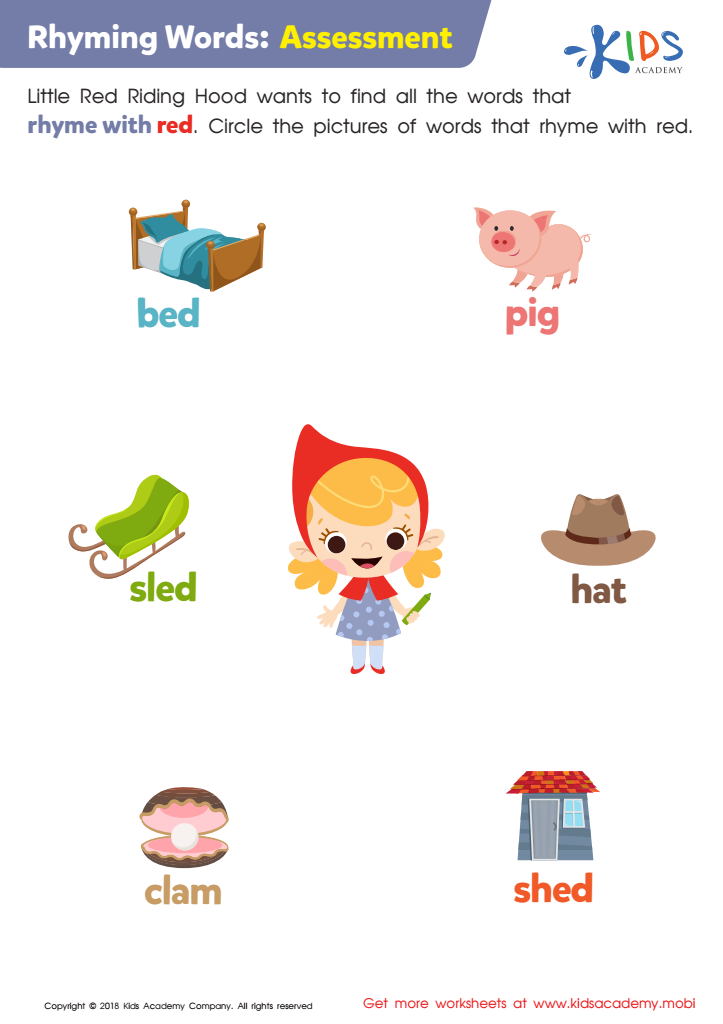Rhyming worksheets activities for 5-Year-Olds
1 filtered results
-
From - To


Rhyming Words: Assessment Worksheet
Rhyming worksheets activities are an invaluable tool in the developmental journey of young learners. These activities are meticulously designed to engage children in fun and interactive learning, focusing on the foundational skill of rhyming, which is crucial for early literacy development. Here’s why rhyming worksheets activities stand out as a beneficial educational resource.
First and foremost, rhyming worksheets activities enhance phonemic awareness. By engaging in these exercises, children learn to identify sounds within words, understanding how they can be similar or different. This awareness is a cornerstone of reading readiness, paving the way for children to decode words and sentences more efficiently as they progress in their learning journey.
Moreover, rhyming worksheets activities boost memory and cognitive development. Through the repetitive nature of rhyming, children are more likely to retain information and vocabulary. This repetition reinforces memory pathways, making it easier for young learners to recall words and their meanings, ultimately enhancing their language skills.
Additionally, these activities foster creativity and imagination. Rhyming encourages children to explore language in a playful manner, allowing them to experiment with sounds and word patterns. This not only makes learning more enjoyable but also helps in developing creative thinking skills, as children learn to generate their own rhymes and stories.
Furthermore, rhyming worksheets activities are designed to be inclusive and adaptable to various learning styles. Whether a child is a visual, auditory, or kinesthetic learner, these activities can be tailored to meet their individual needs, ensuring that all children have the opportunity to succeed and thrive in their educational journey.
In conclusion, rhyming worksheets activities are an essential element in early childhood education. They lay the groundwork for literacy, stimulate cognitive development, unleash creativity, and cater to diverse learning styles, making them a powerful tool in fostering the overall growth and development of young learners.
 Assign to My Students
Assign to My Students





















